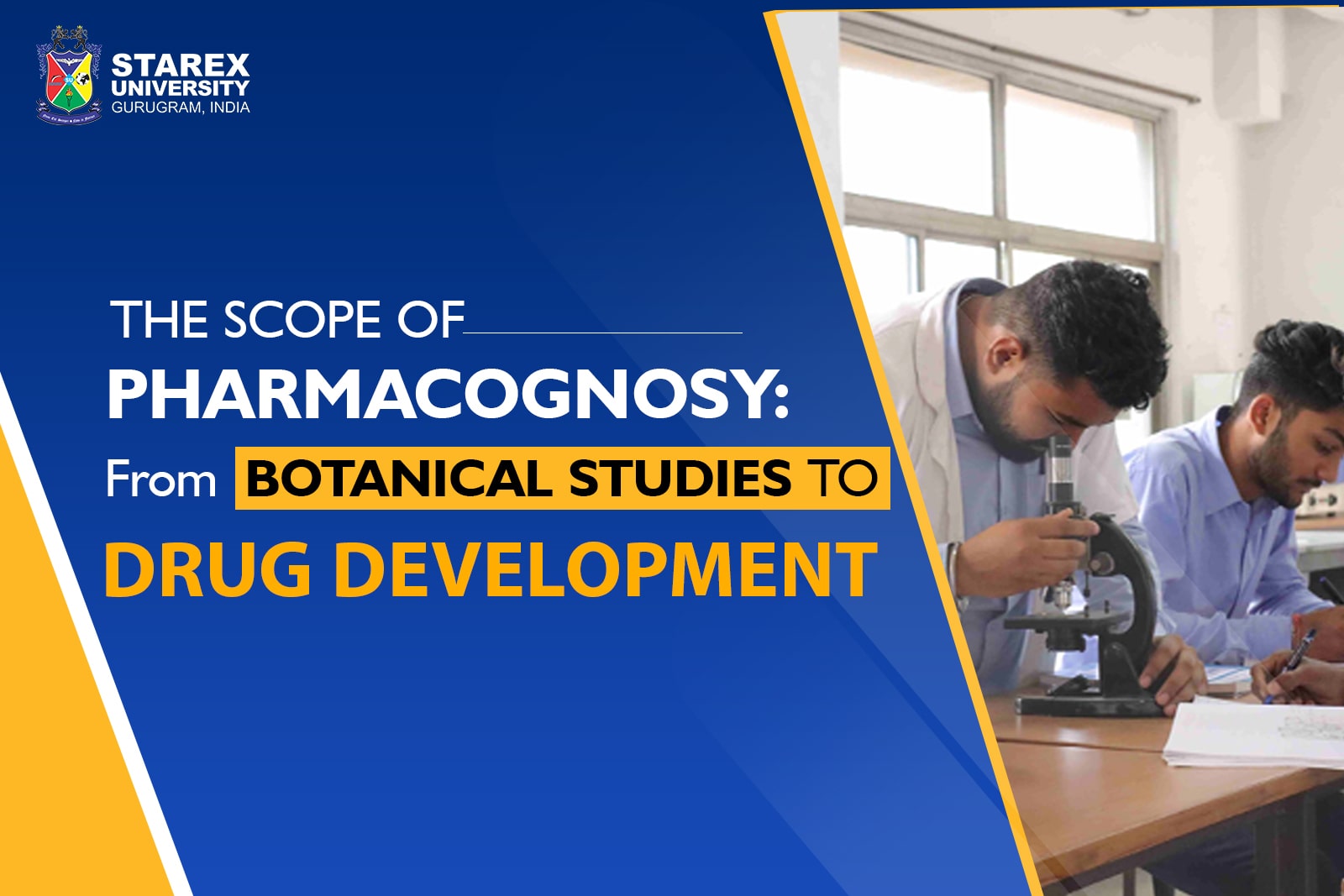Admission Helpline : 1800 1033 123 1800 1033 123
1800 1033 123

Posted By:Admin Posted On: 20-May-2024
Pharmacognosy, the branch of science focused on the study of medicinal drugs derived from natural sources, particularly plants, holds a vast and intricate scope ranging from botanical exploration to pharmaceutical applications. Initially, pharmacognosy delves into botanical identification, classification, and cultivation of medicinal plants, emphasizing their chemical constituents and biological activities. This involves rigorous botanical surveys, phytochemical analysis, and ethnobotanical studies to unearth potential therapeutic agents. Once promising compounds are identified, Pharmacognosy transitions into Pharmacological investigations, elucidating mechanisms of action, therapeutic efficacy, and safety profiles through preclinical and clinical trials. Furthermore, Pharmacognosy plays a pivotal role in drug discovery and development, as natural products serve as inspiration for novel drug design or as lead compounds for synthetic modifications.
The scope of Pharmacognosy extends beyond conventional pharmaceuticals, encompassing nutraceuticals, cosmeceuticals, and herbal supplements, catering to the growing demand for natural and plant-based therapeutics. Additionally, with advancements in biotechnology and bioinformatics, Pharmacognosy integrates interdisciplinary approaches, such as molecular biology and computational modeling, to enhance the efficiency of drug discovery and optimize plant-based formulations. Thus, the scope of Pharmacognosy traverses the entire continuum from botanical exploration to the development of pharmaceuticals, underscoring its significance in harnessing the therapeutic potential of nature's bounty.
The scope and development of pharmacognosy have evolved significantly over time, driven by advancements in scientific research, technological innovations, and changing healthcare needs. Here's an overview of the scope and development of pharmacognosy:
Pharmacognosy has historically been intertwined with traditional medicine practices worldwide. As scientific understanding has progressed, there's been a concerted effort to bridge traditional knowledge with modern pharmacology. This integration involves validating the efficacy of traditional remedies, identifying bioactive compounds, and developing evidence-based herbal medicines.
The scope of pharmacognosy includes botanical exploration to discover new medicinal plants and ethnobotanical studies to document traditional uses. With the aid of advancements like GPS technology and molecular identification techniques, pharmacognosists can conduct systematic surveys of plant biodiversity and indigenous knowledge, leading to the discovery of novel therapeutic agents.
Once medicinal plants are collected, pharmacognosists employ various analytical techniques such as chromatography, spectroscopy, and mass spectrometry to isolate and characterize their chemical constituents. This process helps identify bioactive compounds responsible for therapeutic effects and guides further research into their pharmacological properties.
Pharmacognosy bridges the gap between traditional medicine and modern pharmacology by conducting pharmacological studies to evaluate the therapeutic potential, mechanisms of action, and safety profiles of natural products. Preclinical experiments, including in vitro and in vivo assays, are conducted to assess the biological activities of plant extracts and isolated compounds, paving the way for clinical trials and drug development.
Natural products discovered through pharmacognostic research serve as valuable sources for drug discovery and development. Pharmacognosist collaborate with medicinal chemists, pharmacologists, and pharmacists to identify lead compounds, optimize their pharmacokinetic properties, and develop standardized formulations for clinical use. This interdisciplinary approach accelerates the translation of natural products into pharmaceuticals.
Pharmacognosy extends beyond conventional pharmaceuticals to include the study of nutraceuticals (functional foods and dietary supplements) and cosmeceuticals (cosmetic products with bioactive ingredients). Pharmacognostic research on plant-derived compounds provides scientific evidence for their health benefits and cosmetic applications, contributing to the booming nutraceutical and cosmeceutical industries.
With advancements in biotechnology, bioinformatics, and computational modeling, pharmacognosy integrates interdisciplinary approaches to enhance drug discovery and optimization processes. Techniques such as molecular biology, high-throughput screening, and computer-aided drug design are employed to expedite the identification of bioactive compounds and elucidate their mechanisms of action.
Overall, the scope of pharmacognosy encompasses a wide range of activities, from botanical exploration and phytochemical analysis to drug discovery and development, highlighting its significance in harnessing the therapeutic potential of natural products for human health and well-being.
Learn More: SCHOOL OF PHARMACEUTICAL SCIENCE